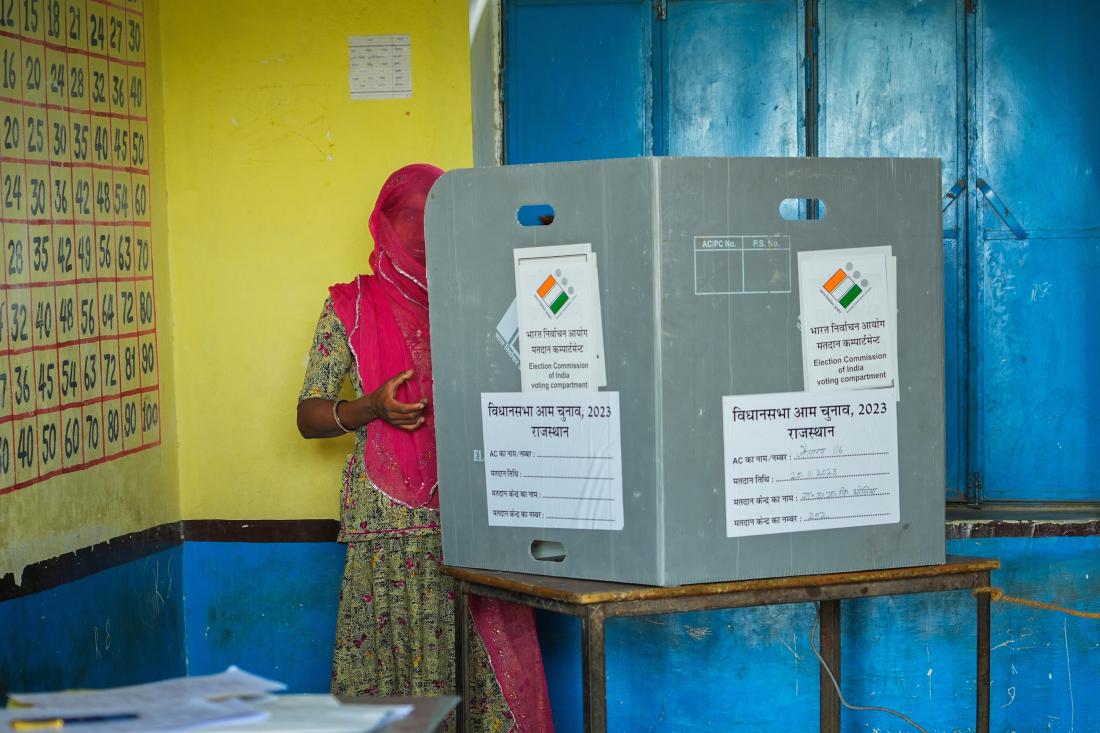Empowering Female Leaders and Voters in Rajasthan, India
- Rural population
- Empowerment
- Transparency and accountability
- Women’s/girls’ decision-making
- Gender attitudes and norms
- Diversity quotas
- Information
- Gender quotas
Policy issue
Relative to their share in the population, women are under-represented in all political positions – comprising only 19% of all the world’s parliament members in 2010. These gender disparities do not reflect legal restrictions in most cases – women can vote, support candidates and run for office in almost every country. It has been suggested that in both rich and poor countries, women’s access to public office is restricted by voter bias in favor of male politicians. Women’s reservation policies, guaranteeing a certain number of seats for female candidates, are advocated as a way to reduce the gender bias in politics. Evidence from past studies indicates that gender quotas are sufficient for empowering female leaders over the longer term through helping them overcome voters’ prejudices against women by demonstrating the capability of female leaders. In this context, complementing gender quotas with proactive information campaigns that provide voters objective and verifiable information about the performance of elected male and female leaders may both help change voter stereotypes and enhance electoral accountability.
Context of the evaluation
In India, a third of the village council leader positions have been reserved for women by constitutional amendment since 1993 and the government recently committed to increase this proportion to half. The village councils control the allocation of funds for local infrastructure projects, such as construction and maintenance of drinking water and irrigation systems, road construction, and beneficiary selection for government programs. A key aspect of the quota legislation was that it resulted in the random assignment of villages to reservation of the position of chief village councilor to a female.
This study took place in rural Rajasthan, a state in India which has been severely affected by recurrent droughts. In 2005 , an employment generation schemes called the National Rural Employment Guarantee Scheme (NREGS), which guarantees 100 days of work to unskilled laborers and was particularly important in Rajasthan, was begun. Rajasthan ranks first across the country in terms of demand of labor under NREGS. Given the poverty, the droughts and the high level of dependence on agriculture in the region, NREGS has become popular, and the program has become central to the economic and political landscape of rural Rajasthan.

Details of the intervention
The intervention consists of a report-card based pre-election information campaign focusing on the role and performance of the average elected village council leaders in the district (not the representative of this particular village) in implementing public works programs, including NREGS. The information campaign was run by Prayatn Sanstha, a local NGO, in the 2-3 weeks preceding the village council elections in the state of Rajasthan. The campaign used only information publicly available on the internet, but it was packaged and made available to villages that do not have easy acess to the internet.
The campaign consisted of the provision of information on the role and performance of village council leaders and was disseminated by Prayatn using calendar posters and village theatrical performances. The information provided had two components:
- The first was general information on the role of elected village leaders in provision of public goods. In order to test how constituents react to different messages, the treatment sample was randomly divided into two subgroups across which the message was varied. In one subgroup, the importance of electing effective leaders was emphasized by explaining that they are responsible for public good provision including drinking water and ration cards (which previous research has shown is valued more by women). In the second subgroup the same principle was motivated using examples of road construction and irrigation facilities (valued more by men).
- The second component focused on key performance indicators of village leaders in implementing NREGS (such as total expenditure, share of total households who benefited from the scheme, and number of man-days provided per household enrolled), generated from the public NREGS website. In one set of report cards, only district averages were publicized. In the remaining, figures were disaggregated by village councils where the leadership position is reserved for women leaders and unreserved village councils. This allowed villagers to evaluate the effectiveness of female leaders (relative to male leaders).
Data was collected from administrative sources and household surveys. Researchers will examine the number of women candidates, electoral successes for women, voter turnout, incumbency patterns in the village councils, knowledge on NREGS, knowledge of the role of the political leader in implementing NREGS, and opinions on female candidates.
Results and policy lessons
Results forthcoming.

